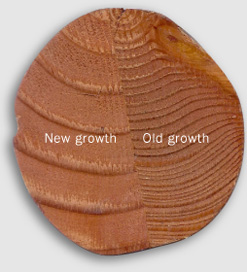

| Visitors Now: | |
| Total Visits: | |
| Total Stories: |

| Story Views | |
| Now: | |
| Last Hour: | |
| Last 24 Hours: | |
| Total: | |
Strength in Adversity
Maid Elizabeth and I were driving to town last week, talking about all of the weighty matters that were on our minds, when our conversation took a turn to the philosophical.
Recently, we have been working on numerous building projects using “reclaimed” wood from my childhood homestead. This lumber was harvested from our property, the timber of which had not been been touched in well over 100 years, if ever. My father cut the trees down, had the logs hauled to a local mill and the logs were rough cut into dimensional lumber. Over the years, that lumber has been used to build barns, outhouses and board fences. It has been remade into arenas, outbuildings and porches. It has been left untreated – exposed to the elements, and yet, it retains it strength and natural, rustic beauty. As my parents have dismantled unused buildings and fences, Sir Knight and I have inherited some the the well used lumber. It has taken shape as raised garden beds, chicken coop doors and window boxes. Although rough in form and weathered in appearance, it is solid and sturdy – ready to serve in any capacity for at least the next two or three decades. This lumber needs no special care, requires little maintenance, yet performs its duties with the dignity of a weathered soldier.
As we talked, Maid Elizabeth noted the differences between our “old growth” lumber and the lumber harvested from today’s managed forests. The old growth lumber is solid – hard as a rock. Often, nails bend when you try to hammer it together and holes have to be drilled before it will accept screws. Old growth lumber will hold buildings together for a century only to yield its bones to a newly conceived structure to serve yet another generation. While old growth lumber seems to defy the ravages of time, lumber from our modern, managed forests pale in comparison. It is soft, porous and splits easily. While outbuildings used to stand untouched for generations, now they require constant maintenance with an expectation of replacing them in 30 years. Over the years, the quality of the wood itself has declined sharply, rendering its usefulness infinitely limited and its longevity a mere fraction of that of the old growth lumber.
So, what has changed? Adversity of course. Old growth timber was reared in adversity. It accepted whatever blessings or curses nature chose to heap upon it. During times of want, the trees grew slowly, hardening as they matured. Years of drought would cause their roots to stretch deep into the earth, searching for precious water, while hard winters appeared to stunt their growth but actually hardened their core, preparing them for whatever hardships they may have to endure in the future. The result of this adversity? Beauty and strength unparalleled.
Lumber harvested from managed forests can hardly be compared to its old growth predecessors. The trees that produce today’s lumber have been watered and fertilized, with constant thinning so that each tree is assured adequate sunlight. Our forest management practices have sought to relive our forests of the burden of suffering, thus producing a weak, inferior, disposable substitute. What seemed wise in the hearts of men has become the very core of weakness.
And so it is in society. We have sought to replace adversity and suffering with ease and equality and in doing so we have produced generations of weak, inferior and disposable human beings. We have not had to stretch our roots deep or strengthen from the core of our being out. Shunning hardship we have stunted our growth, leaving us spindly and unfit for service.
Where do we go from here? We have to begin seeing adversity as a friend, something to hold close and cherish. We have to realize that in the darkness of suffering our core is being tempered, girding us in strength, and that strength will fit us to serve our Lord and our fellow man for generations to come. Rather than shrinking from suffering, we must have the will to find strength in our adversity.
2013-04-05 02:51:15
Source: http://www.paratusfamiliablog.com/2013/04/strength-in-adversity.html
Source:




